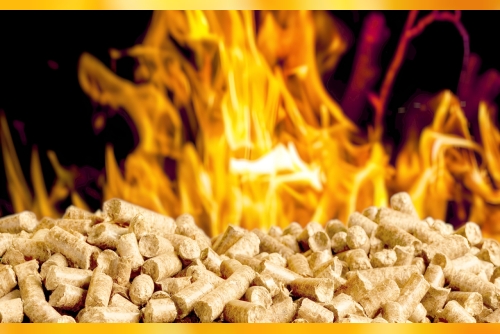The world is rapidly shifting towards sustainable and renewable sources of energy in order to combat the detrimental effects of climate change. One of the key players in this transition is biomass, or organic material derived from plants and animals, which has been used as a source of energy for centuries. With the advancement of technology and increasing awareness of the need for sustainable energy, biomass is now being processed into a highly efficient form - wood pellets.
Wood pellets are small, cylindrical pellets made from compressed biomass materials such as sawdust, wood chips, and agricultural waste. They are considered to be the most efficient and cost-effective form of bioenergy, with a high energy density and low emissions. As a result, wood pellets are rapidly gaining popularity as a renewable energy source for both residential and industrial purposes.
Harnessing the power of nature through wood pellets comes with various benefits, but it also faces certain challenges. In this article, we will dive deeper into the world of biomass wood pellets and explore their potential as a sustainable energy source.
The Benefits of Biomass Wood Pellets
Renewable and Sustainable Energy Source
Biomass is a renewable energy source, meaning it can be replenished within a relatively short period of time. In contrast, fossil fuels such as coal and oil take millions of years to form and are therefore considered non-renewable. The production of wood pellets also utilizes waste materials, reducing the amount of agricultural and forestry waste that would otherwise contribute to landfills. This makes wood pellets not only renewable but also a sustainable energy source.
High Energy Density
Wood pellets have a high energy density, meaning they contain a large amount of energy in a small space. This makes them highly efficient for transportation and storage. In comparison to other biomass sources, wood pellets have a significantly higher energy density, making them a more attractive option for powering large industries and households.
Low Emissions
The combustion of wood pellets produces significantly lower emissions of harmful gases such as carbon dioxide, sulfur dioxide, and nitrogen oxide when compared to fossil fuels. This makes wood pellets a cleaner and more environmentally friendly choice for energy production, contributing to the fight against global warming.
Benefits for Local Economies
The production of wood pellets has created new job opportunities in rural areas where forests and farms are abundant. This has resulted in economic growth and social development in these areas, supporting small businesses and local communities. Additionally, the use of wood pellets as a renewable energy source decreases reliance on imported fuels, reducing trade deficits.
Versatility
Wood pellets can be used for various purposes, from generating electricity to heating homes and even in cooking stoves. Their versatility makes them a valuable resource for different industries and households, providing a sustainable alternative to traditional sources of energy.
The Challenges of Biomass Wood Pellets
Despite its benefits, the production and use of biomass wood pellets also face several challenges.
Sourcing Raw Materials Sustainability
One of the major challenges of biomass wood pellets is ensuring sustainable sourcing of raw materials. As the demand for wood pellets increases, so does the need for more raw materials, leading to potential deforestation and unsustainable harvesting practices. This can have a negative impact on ecosystems and biodiversity, reversing the efforts towards sustainability.
Transportation and Storage Costs
While wood pellets have a high energy density, the costs associated with transportation and storage can be a significant challenge. As the distances between production facilities and end-users can vary greatly, this can result in higher prices for consumers. This makes it crucial to establish more local and regional wood pellet production facilities to mitigate transportation costs and support the local economy.
Market Competition
The market for renewable energy sources is becoming increasingly competitive, and wood pellets are facing competition from other forms of biomass as well as other renewable energy sources such as solar and wind power. The fluctuation in the costs of fossil fuels also affects the demand for wood pellets, making it necessary to maintain a stable market for its production.
Addressing the Challenges
To fully harness the potential of biomass wood pellets, it is crucial to address the challenges faced by the industry. Here are some solutions to overcome these challenges and ensure the sustainable production and use of wood pellets.
Sustainable Sourcing of Raw Materials
To ensure sustainable sourcing of raw materials, it is vital to establish and enforce standards for responsible forestry and agricultural practices. This includes promoting efficient land use and reducing waste, as well as implementing sustainable harvesting methods to preserve forests and promote biodiversity. It is also essential to continuously monitor and evaluate the supply chain to identify and address any unsustainable practices.
Investing in Technology
Investing in research and technology is crucial to improve the efficiency of wood pellet production, reduce costs, and minimize the environmental impact. Advanced technologies such as torrefaction, a process that converts biomass into high-density pellets, can increase the energy density of wood pellets and improve their combustion efficiency. Similarly, innovations in transportation and storage can help reduce costs and improve the accessibility of wood pellets to a wider market.
Diversifying Markets
Diversifying the market for wood pellets can help mitigate the effects of market competition. This involves identifying and targeting new industries and regions where wood pellets can be utilized as a renewable energy source. It also includes developing new and innovative applications for wood pellets, such as using them as a substitute for coal in power plants.
Government Support and Incentives
Government support and incentives can play a crucial role in promoting the production and use of wood pellets. This can include tax breaks, subsidies, and mandates for the use of renewable energy sources. By creating a favorable market for wood pellets, governments can help drive investment and development in the industry.
The Potential of Biomass Wood Pellets
Biomass wood pellets have the potential to play a significant role in our transition to a more sustainable future. Their numerous benefits and versatility make them an attractive option for industries and households looking to reduce their carbon footprint and decrease their reliance on fossil fuels. As the level of awareness and demand for sustainable energy continues to rise, the potential for biomass wood pellets to become a major source of renewable energy is rapidly increasing.
In conclusion, harnessing nature's power through Biomass Fuel Pellets comes with tremendous potential, but it also requires a responsible and sustainable approach. By continuously addressing and overcoming the challenges faced by the industry, we can fully realize the benefits of wood pellets and contribute to a greener and cleaner future for generations to come.
For more information: https://www.ecostanbiofuel.com/biomass-pellets visit!












 Find Answers to the Most Frequently Asked Dashcam Questions
Find Answers to the Most Frequently Asked Dashcam Questions



